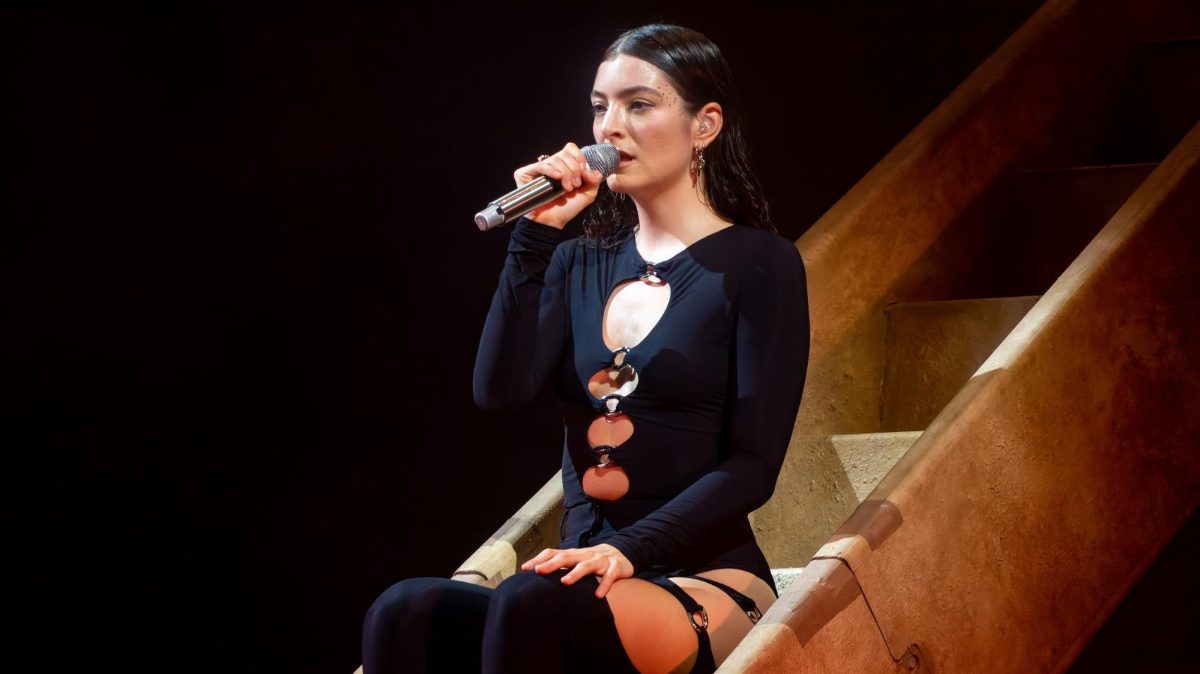By Kathryn Lee
Teachers’ desks are usually fairly empty, save for a few manila folders and sheafs of paper, or the occasional issue of The Southerner. But today, students stare at the desk with curious eyes. Today, not only are there folders and papers, but stacks and stacks of books. For the freshmen, it might be Lord of the Flies; for the sophomores, 1984; for the juniors, The Great Gatsby; and for the seniors, Hamlet.
Though this selection of fiction includes works from different centuries and authors, one factor ties them all together: their white, male protagonists.
This lack of diversity in the school’s English curriculum is not only troublesome in the modern era, but counterintuitive to helping students understand the real world.
Keeping the school curriculum largely dominated by male, white, heteronormative narratives feels like a conscious decision, especially in the face of a rapidly diversifying student body. For the 2015-2016 school year, the New York State Education Department reported that 64% of the Great Neck South student body was nonwhite. With such a large majority of students coming from different cultures and backgrounds, it makes little sense to constrain the curriculum to a few select themes. In fact, constraintment of the curriculum may also constrain something else: students’ interest in reading. In one Marshall University study on young adult literature, respondents expressed frustration over the lack of representation of disabled, LGBT+, and female characters. This lack of representation may stifle interest in reading, especially since it means that students cannot find any characters that they relate to. Additionally, limiting the general narrative to one type of character negatively affects students that may feel insecure about their gender, race, or sexuality. Representation in literature and the media is a key way of letting people—especially teenagers—know that they should not be ashamed of their identity. A lack of such representation may leave some kids feeling alienated and alone.
However, it’s not only schools that are becoming more diverse—it’s the country as a whole. In 2019, the Census estimated that 23.5% of Americans were nonwhite. In an increasingly multicultural America, many are unsure of how to behave or how to approach people with different customs. This is where literature comes in. As Rudine Sims Bishop, a children’s literary expert, explains, “books […] can act as both mirrors and windows for […] our children, they will see that we can celebrate both our difference and our similarities, because together they are what makes us all human.” Giving students the opportunity to learn about other cultures and beliefs through literature before they transition into the “real world” is paramount. The classroom acts as a safe space, allowing students to understand new information at their own pace and ask questions.
Moreover, the portrayal of women and people of color by authors who are neither and the inclusion of those authors’ works in school curriculums has led to students being taught racist, sexist stereotypes. Some argue, for instance, that in Harper Lee’s To Kill a Mockingbird, Tom Robinson exists for no other purpose than to be defended by Atticus Finch as a testament to Finch’s infallible heroism and good heart. This technique of using characters of color as plot devices to advance the agenda or emphasize the goodness of the white main character is known as the “white savior trope.” In addition to this trope, many stories are written with a male gaze. The “male gaze” in literature is defined as writing that objectifies and sexualizes female characters. One novel guilty of utilizing this device is George Orwell’s 1984, in which Julia is heavily sexualized and arguably exists for no other purpose than to provide excitement in Winston’s life. In light of these issues, it would be more advantageous to replace To Kill a Mockingbird with a novel like Their Eyes Were Watching God 1984 with a novel like Wuthering Heights. By allowing women and authors of color to take charge of narratives about them, the nuances regarding their situations may be better explained.
Critics of incorporating more diversity argue that contemporary stories—the works most likely to be up-to-date with representation—are overly violent and sexual. However, some classics are equally violent and sexual, such as the aforementioned 1984, along with The Catcher in the Rye and The Lord of the Flies. Both books are part of Great Neck South’s curriculum. But it is not just complaints about content that presents an obstacle to diversifying required reading; some have also voiced concerns that schools do not have the adequate funding to buy copies of newer, more expensive books for all of their students. However, they don’t have to. Many diverse classics are sold at much lower prices than new books, or even available for free on websites such as Project Gutenberg.
Some also argue that current curriculum selections are not based on race or gender, but based on the superiority of the content. And this is certainly true—to an extent. Books like The Great Gatsby and 1984 are undoubtedly great, and their white, male authors and casts are largely incidental. These books are staples of any high school English class. But in insisting that such books are the only “great” ones or the ones “best suited” to a school, educators effectively shut out other, equally deserving works of literature, including those of Toni Morrison, Alice Walker, Betty Smith, James Baldwin, Lorraine Hansberry, Zora Neale Hurston, Virginia Woolf, and the Brontë sisters, to name a few. Fitzgerald, Orwell, and their other white, male counterparts are not the only great authors to have ever existed in the global canon.
Of course, that is not to say that we should teach books simply because they are written by a woman and/or by a person of color. But when there are so many acclaimed selections to choose from, it seems like willful ignorance to insist on the same white, male literary monolith.
And as for the “diverse” curriculum we currently have . . .
Every year, a GNS student reads roughly four works of literature. That means by the end of their high school career, the average GNS student will have read sixteen books or plays. Out of those sixteen selections, only To Kill a Mockingbird and Narrative of the Life of Frederick Douglass are written by women/people of color—fewer than half of the total. Shakespeare plays alone compile a quarter of a student’s workload. This is not a diverse curriculum.
And simply offering teachers the option to teach diverse books in addition to the books they are already required to teach is not a viable solution either. The school year hardly allows for teachers and students to read and completely analyze four literary works as it is. Even if educators are allowed the opportunity to teach more diverse books, not affording them the opportunity to “swap out” required books for more representative books means that teachers will not have the chance to actually incorporate such works into their classrooms. Representative books must be made a concrete part of the curriculum, not an option that can be shrugged off.
Ultimately, the decision to diversify curriculums must be conscious and well-thought out. It should not be superficial. In the past, educators have attempted to incorporate more representation into their curriculums, but without considering all of the factors of what makes a book meaningful. According to Liz Soeiro, an elementary school librarian, “‘A lot of people will see a brown child on the cover of a book and think that’s enough [but we also] have to look critically at the agency of that child, who wrote the book, the dominant narrative in the book.’” It is evident that diversifying school libraries goes far beyond simply including stories that have characters of diverse backgrounds, sexualities, and genders. If that was the case, then To Kill A Mockingbird, The Adventures of Huckleberry Finn, and 1984 would all still be considered “diverse” works.
In GNS classrooms, students are given the opportunity to analyze literature with a critical eye. Our school has an obligation to enrich students’ lives through an introduction to diversity, especially for female students, students of color, and LGBT+ students who may not otherwise see themselves represented in outside literature. By limiting the curriculum to reflect an untrue message about the composition of society, the message that only those works are worth discussing is conveyed. And that message is simply not true. The ability to identify with characters and understand the nuances of situations beyond our own should be a right in the classroom, not a privilege based on an outdated selection of literature.






